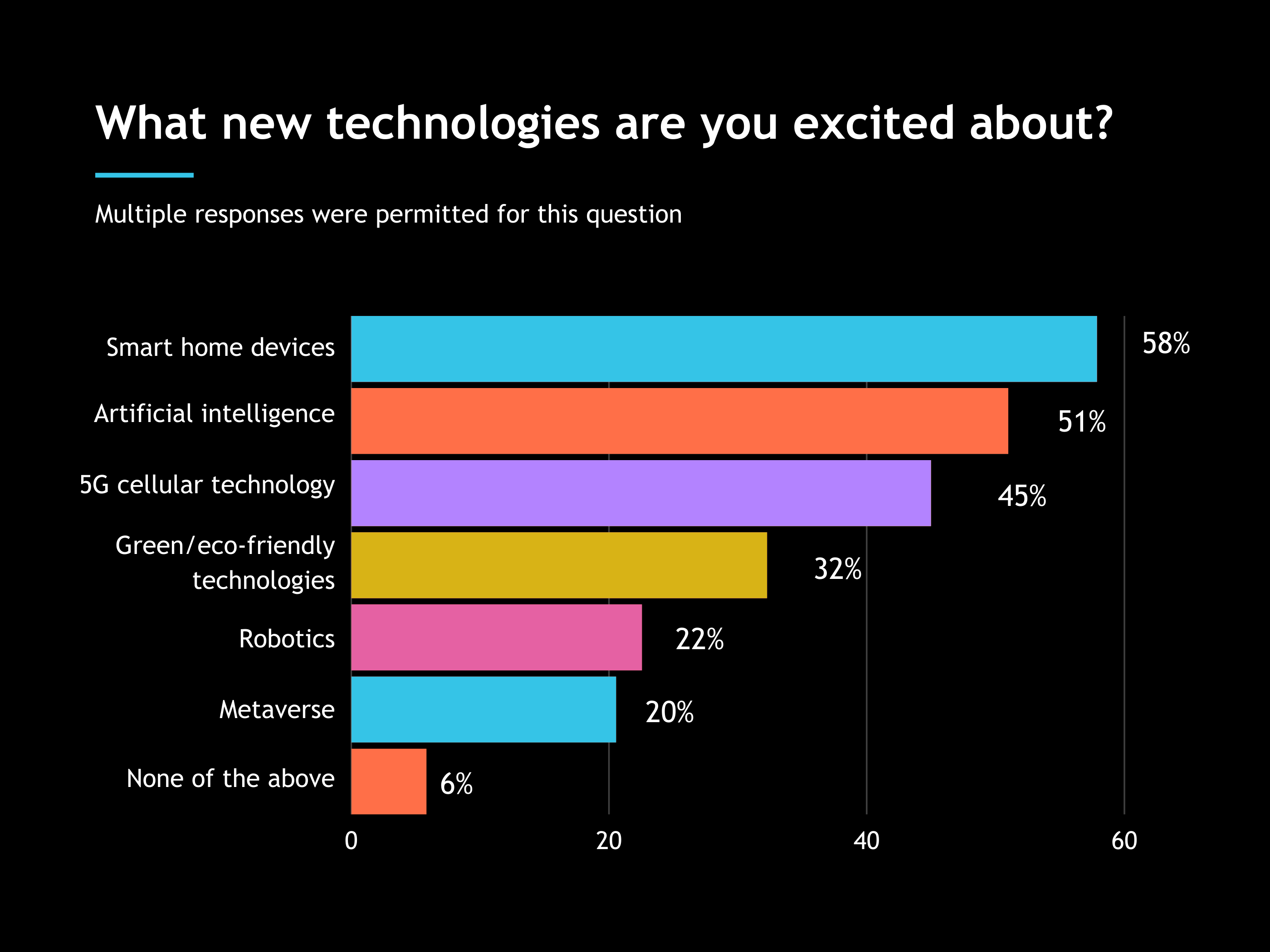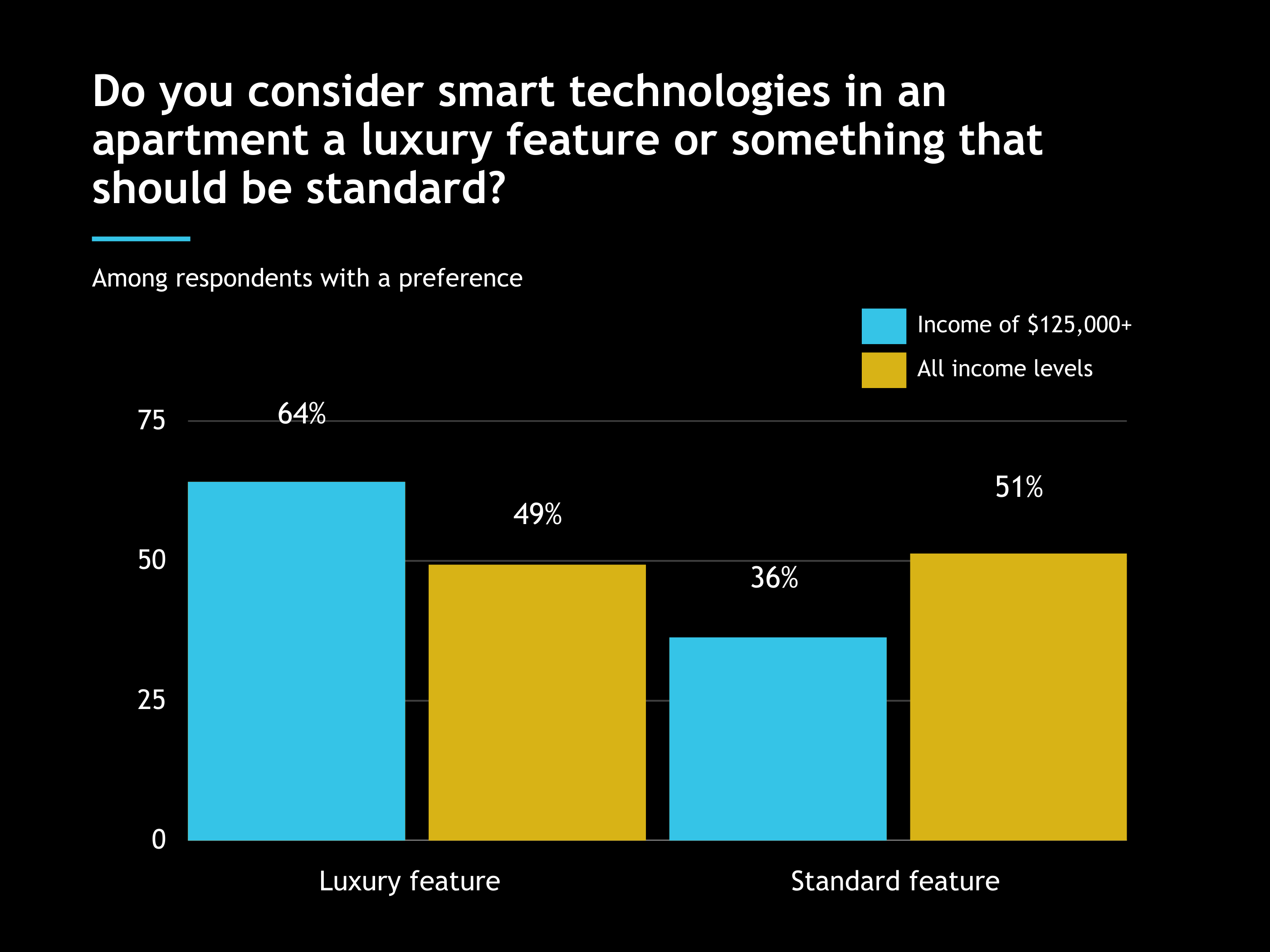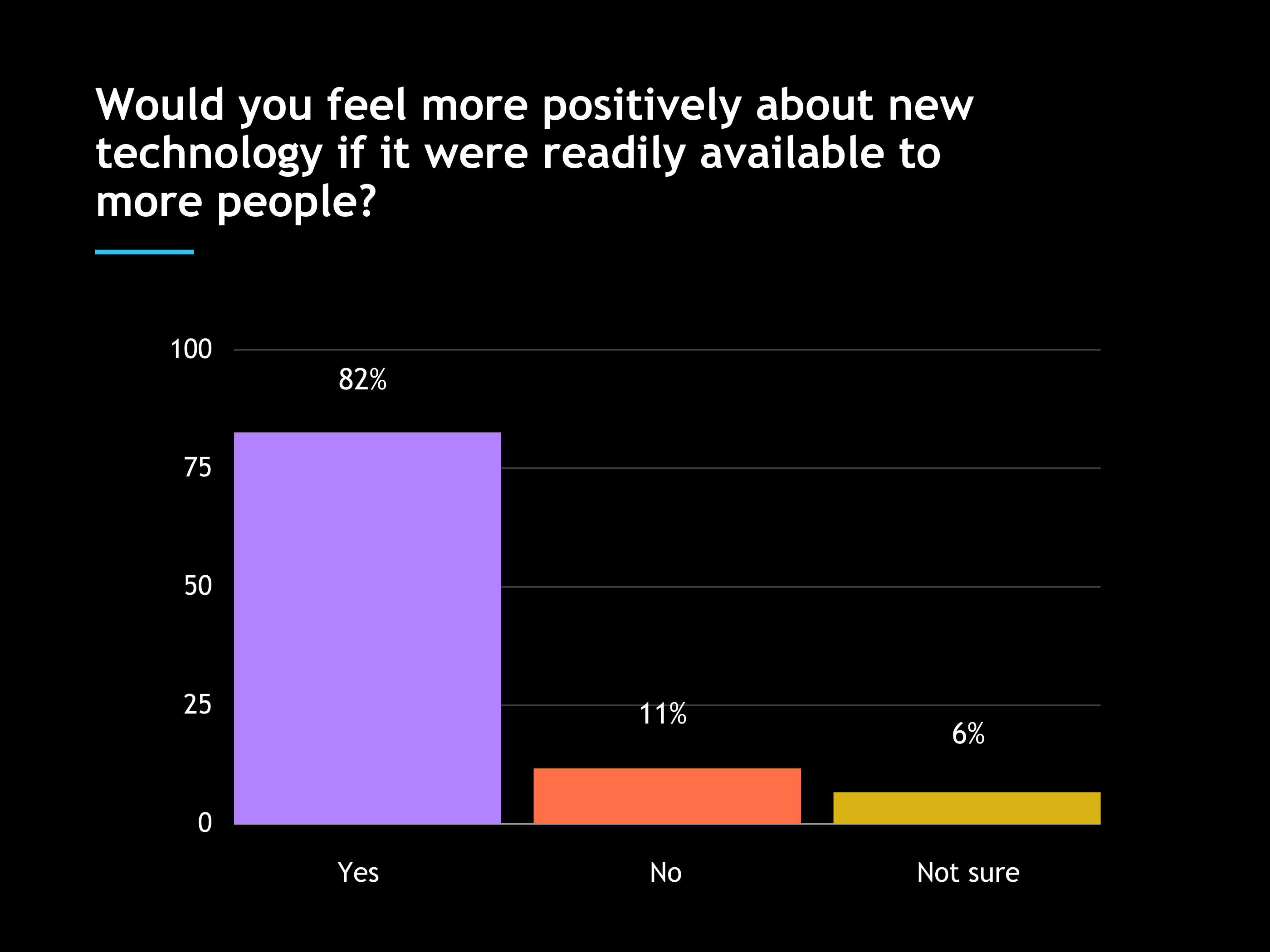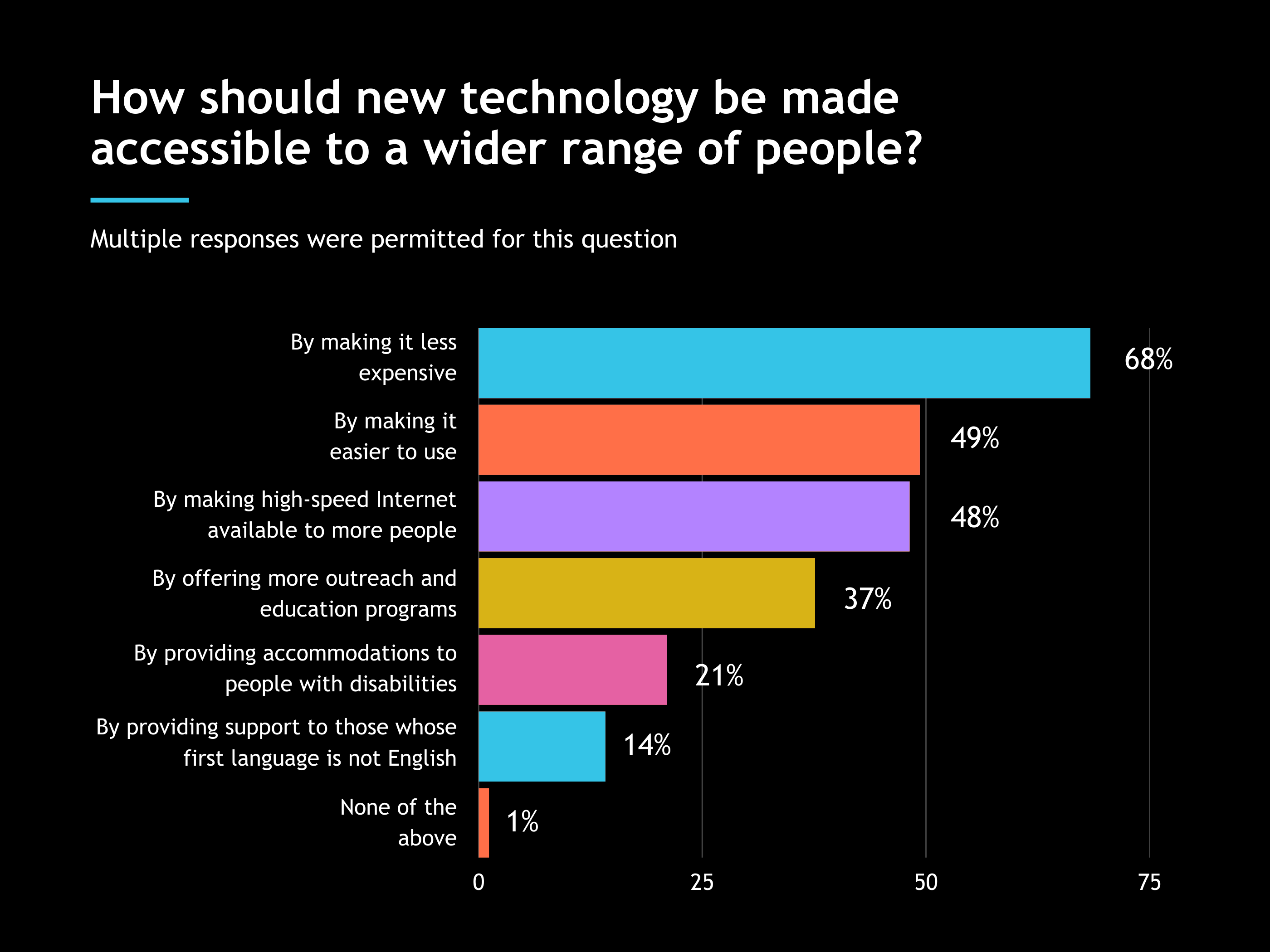Quext study highlights consumer enthusiasm, reveals desire for greater access to smart home technology.
Purpose of This Study
At Quext, we believe in the power of technology to improve the lives of residents and operators in the multifamily industry. Our core value of “Community” drives us to simplify and democratize solutions, making better, smarter products available to everyone, regardless of their background. We are passionate about narrowing the digital divide and creating opportunities benefiting all walks of life.
With this larger purpose in mind, the Quext team wanted to better understand Americans’ perceptions and experiences with smart home technologies, and how they differ based on income and background. That’s why we decided to conduct the 2023 Quext Survey: Smart Home Technology Trends using the third-party survey platform Pollfish.
What we found is that consumers are more enthusiastic about the promise of smart home technologies than ever—but that we still have a ways to go to close the digital divide and make these innovations more widely available.
Profile of Respondents
- Respondents represent a wide range of household incomes, from more than $150,000 per year to less than $25,000 per year.
- 52% of respondents are married or living with a partner; 47% are single, divorced, widowed or separated.
- 56% of respondents are university graduates, and 97% have at least a high school diploma.
Key Findings
- Americans are more excited about the future of smart home technologies than AI, 5G or the metaverse.
- Among smart home products, only smart speakers like Alexa were used by more than 40% of respondents in all income groups.
- Most apartment dwellers believe smart home technology should be a standard feature of their residences—although those making $125,000+ said they prefer to view it as a luxury.
- Access to and enjoyment of smart home features plummeted for those paying lower rents.
- In general, Americans say they would feel more positively about new technologies if they were available to a greater percentage of the public.
Americans are more excited about the future of smart home technologies than AI, 5G or the metaverse.
The survey began by asking Americans about their feelings toward new technology in general. Across income groups, respondents showed excitement about emerging technologies, with 80% saying that technology advances “improve their quality of life.” When asked “Do you think technological advancement helps or hurts society?” 78% said “helps” compared to only 8% who said “hurts” and 14% who answered “not sure.”
Respondents were then given a list of six new technologies and asked which ones they were most excited about. Despite all the attention given to ChatGPT of late, AI did not top the list. Americans’ top choice was “smart home devices” (58%), followed by “artificial intelligence” (51%), “5G cellular technology” (45%), “green/eco-friendly technologies” (32%), “robotics” (22%), and the “metaverse” (20%).

While smart home technology was the top pick across income levels, the excitement was greater among Americans with higher incomes. Among respondents with annual household incomes of $100,000+, 65% said they were excited about smart home devices, compared to just 47% of those with incomes below $50,000.
Perceptions of the availability of new technologies to the public also varied based on income. When asked, “Do you believe most new technologies are accessible to a wide range of people?” 74% of those with annual household incomes of $100,000+ said “yes,” compared to 25% who said “no.” But among Americans with annual household incomes of less than $75,000, less than half (49%) answered “yes,” with 44% answering “no” and 7% saying they weren’t sure.
Among smart home products, only smart speakers like Alexa were used by more than 40% of respondents in all income groups.
Among smart home products, smart speakers like Amazon Alexa were the most popular category, with 57% of respondents saying they currently have one in their residence. Most categories, however, such as smart thermostats and smart kitchen appliances, were used by fewer than a third of respondents. For less-affluent respondents ($50,000 annual household income and below), usage rates plummeted.
For example, while 65% of those with annual household incomes of $75,000+ said they currently use a smart speaker at their residence, only 47% of those with incomes of less than $75,000 had this access. And while more than half of those with incomes of $100,000+ use smart home security systems (51%) and smart lighting systems (50%), only 34% of respondents with incomes under $100,000 said they use smart home security systems, and only 21% use smart lighting systems.

Most apartment dwellers believe smart home technology should be a standard feature of their residences—although those making $125,000+ said they prefer to view it as a luxury.
Apartment dwellers in the survey sample were asked whether smart home technologies should be a “luxury” or “standard” feature in multifamily housing. While most high-income respondents ($125,000+ annual household income) said it should be a luxury feature, more respondents overall believed it should be standard.

Access to and enjoyment of smart home features plummeted for those paying lower rents.
Among high-income apartment dwellers ($150,000+ annual household income), 27% cited smart home products as their most important amenity, topping other perks like covered parking and gated entry. Among less-affluent apartment dwellers ($50,000 annual income and below), only 9% cited smart home products, likely due to their relative scarcity in more affordable multifamily housing.
Among apartment dwellers paying monthly rent of $2,000 or less, 22% said they had access to smart home technologies, compared to 32% of those paying more than $2,000 per month in rent. Among those paying less than $1,000 per month, only 12% had access to these technologies.

Among all respondents, 23% said that their apartment offers smart technologies, ranking behind such traditional perks as “pet-friendly amenities” (48%), “in-unit washers and dryers” (47%), “usable common areas” (37%), “private outdoor space” (35%), and “assigned parking” (26%).
While respondents expressed excitement about new technologies overall, a large majority (82%) said they would feel more positively if these technologies were more widely available to the public, with 62% saying that price was the biggest barrier to adoption. Nearly half (49%) said they expected prices to come down within the year.

When asked “How should new technology be made accessible to a wider range of people?” 68% said “by making it less expensive,” followed by 49% who answered “by making it easier to use” and 48% who said “by making high-speed internet available to more people.”

Dave Gilles, CEO of Quext, said the survey’s results showed the American public is eager to adopt smart technologies, creating an opportunity for multifamily property owners and operators.
“Even with all the attention the media has given to ChatGPT and other AI tools recently, most consumers are still more excited about smart home technology—they just wish it were more accessible,” Gilles said. “The multifamily industry can get ahead of this trend by making smart apartment technology more widely available. It’s an investment in resident satisfaction—and in the future.”
Methodology
The survey of 700 U.S. adults was conducted for Quext by the third-party survey platform Pollfish on March 21, 2023. To ensure representation from a full range of income levels, the survey utilized stratified random sampling, dividing the population into seven income ranges and ensuring an equal representation of 100 respondents from each group. Researchers reviewed all responses for quality control.


